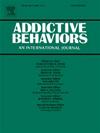叙述式与非叙述式图形警告标签对视觉注意力和酒精相关癌症风险认知的影响:眼动追踪研究。
IF 3.7
2区 医学
Q1 PSYCHOLOGY, CLINICAL
引用次数: 0
摘要
背景:饮酒是一种可预防的癌症风险因素,但公众意识仍然很低。提高认识的一个有希望的方法是在含酒精产品上加上图片警告标签(pwl),但这种警告中使用的典型图形图像可能会引起注意力不集中。本研究调查了叙述性pwl(描述生活经历)是否比图形化、非叙述性pwl(显示图形化的健康影响)能引起更多的关注和更高的风险认知。方法:中度饮酒者和重度饮酒者参加了一项基于网络摄像头的在线眼动追踪实验(N = 649)。他们被随机分配观看一个顺序随机的刺激集,其中包含三个叙述性pwl或三个非叙述性pwl。通过参与者眼球运动指标评估视觉注意力,包括观看每个PWL时的访问次数和分离图像和文本兴趣区域(AOI)的停留时间。在观看所有pwl后,通过参与者对问题的回答来评估风险感知。结果:在这两个指标上,参与者对图像的关注程度都高于对文本AOI的关注程度(p为0.1),而视觉关注并没有介导这种关系。结论:我们的研究结果强调了叙述性pwl在视觉上吸引酒精消费者注意力的潜力。需要进一步的研究来理解为什么叙述性pwl在塑造风险感知方面没有优于非叙述性pwl,无论是直接还是通过提出的中介注意。本文章由计算机程序翻译,如有差异,请以英文原文为准。
Effects of narrative versus non-narrative pictorial warning labels on visual attention and alcohol-related cancer risk perceptions: An eye-tracking study
Background
Alcohol use is a preventable risk factor for cancer, but public awareness remains low. A promising approach to raising awareness is to include pictorial warning labels (PWLs) on alcohol-containing products, but the typical graphic images used in such warnings can cause inattention. This study investigated whether narrative PWLs (depicting the lived experiences) could lead to greater attention and higher risk perceptions than graphic, non-narrative PWLs (showing graphic health effects).
Methods
Moderate and heavy drinkers participated in an online, webcam-based eye-tracking experiment (N = 649). They were randomized to view an order-randomized stimulus set containing either three narrative PWLs or three non-narrative PWLs. Visual attention was assessed by metrics of participant eye movements, including the visit count and dwell time to separate image and text area of interest (AOI) while viewing each PWL. Risk perceptions were assessed by participant responses to questions presented after viewing all PWLs.
Results
Participants paid more attention to the image than the text AOI on both metrics (p’s < 0.05). They also spent more time viewing narrative versus non-narrative PWLs (p’s < 0.05). However, PWL type had no significant effect on risk perceptions (p’s > 0.1), and visual attention did not mediate this relationship.
Conclusions
Our findings highlight the potential of narrative PWLs to visually engage alcohol consumers’ attention. Further research is needed to understand why narrative PWLs do not outperform non-narrative PWLs in shaping risk perceptions either directly or through attention, the proposed mediator.
求助全文
通过发布文献求助,成功后即可免费获取论文全文。
去求助
来源期刊

Addictive behaviors
医学-药物滥用
CiteScore
8.40
自引率
4.50%
发文量
283
审稿时长
46 days
期刊介绍:
Addictive Behaviors is an international peer-reviewed journal publishing high quality human research on addictive behaviors and disorders since 1975. The journal accepts submissions of full-length papers and short communications on substance-related addictions such as the abuse of alcohol, drugs and nicotine, and behavioral addictions involving gambling and technology. We primarily publish behavioral and psychosocial research but our articles span the fields of psychology, sociology, psychiatry, epidemiology, social policy, medicine, pharmacology and neuroscience. While theoretical orientations are diverse, the emphasis of the journal is primarily empirical. That is, sound experimental design combined with valid, reliable assessment and evaluation procedures are a requisite for acceptance. However, innovative and empirically oriented case studies that might encourage new lines of inquiry are accepted as well. Studies that clearly contribute to current knowledge of etiology, prevention, social policy or treatment are given priority. Scholarly commentaries on topical issues, systematic reviews, and mini reviews are encouraged. We especially welcome multimedia papers that incorporate video or audio components to better display methodology or findings.
Studies can also be submitted to Addictive Behaviors? companion title, the open access journal Addictive Behaviors Reports, which has a particular interest in ''non-traditional'', innovative and empirically-oriented research such as negative/null data papers, replication studies, case reports on novel treatments, and cross-cultural research.
 求助内容:
求助内容: 应助结果提醒方式:
应助结果提醒方式:


